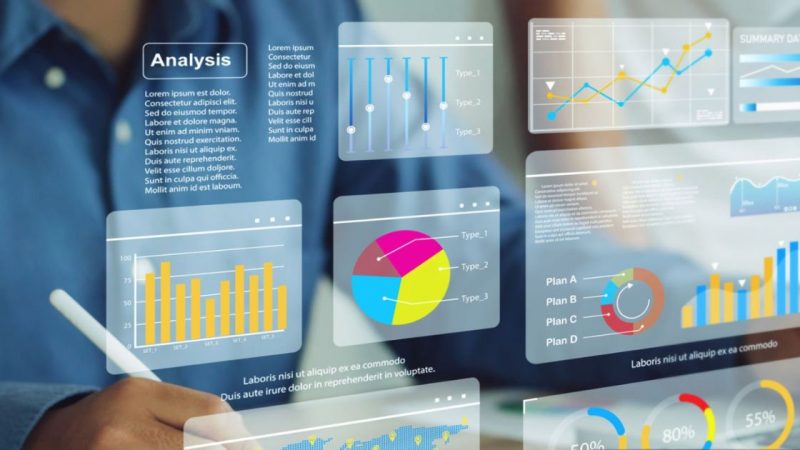Storytelling is one of the oldest professions in the world. From parents passing down skills to their children, to written and oral stories throughout the world, storytelling is how people imagine, connect, and learn in one of the most connective ways.
FP&A storytelling is no less important. Without the stories and reasons behind them, financial numbers mean as little as a petroglyph without an understanding of the time period: essentially meaningless jargon.
Mastering FP&A storytelling isn’t easy- just like being a good author, public speaker, or any other form of public communication isn’t easy. There are many different audiences that need to be accommodated for, and knowing how to communicate to each one is a skill of its own.
Storytelling building blocks
Before knowing what the goal for the data is- meaning who it is for and what needs to be communicated, the 3 key building blocks of FP&A need to be addressed.
- Narrative- The narrative is how you communicate the data, while the role of FP&A is to translate the data into a targeted story. Sometimes this doesn’t come to fruition- whether it’s because finance teams don’t know how to make the transition from data to narrative, or simply because there isn’t enough time to focus on the communication aspect due to the sheer volume of data. While this might sound complicated, it doesn’t necessarily mean creating a lengthy, complicated report about the story of each dataset. Rather keeping it short and to the point is usually the most effective way to communicate a narrative and will make an effective storyteller.
- Visuals- Visuals help highlight the important parts of a story. Studies show that around 65% of the world are visual learners- therefore images and graphs will imprint the important parts of the narrative in the audiences’ minds even if they don’t remember all of the small details. Visuals can change a story- if someone is not the greatest storyteller but has great visuals, the point can still come across very effectively. The opposite is true as well. If someone is a great storyteller but doesn’t use effective visuals, they may lose a lot of the audience, especially the 65% of the audience that are visual learners.
- Data- The data is the foundation of the story and what ties the narrative and visuals together. Before beginning to compile the story, an important question needs to be answered: Is the data being used to tell a story, or is the story about the data itself? FP&A storytellers need to think about the story when reviewing the data and plan ahead. Which data needs to be presented and for what reason, will create a smoother process for choosing visuals and a narrative.

After establishing the three building blocks of FP&A storytelling, it is important to differentiate between the financial planning process and FP&A storytelling as two separate entities.
Although they are defined separately they also need to work together to create the best possible outcome. The goal of FP&A is to influence change; therefore all of the steps involved, from collecting and analyzing the data, all the way through how it is communicated need to be in sync.
The Audience
Understanding the audience is one of the most important aspects of FP&A storytelling. The audience can be executives, stakeholders, potential investors, or company wide employees, and in each case the storytelling will look very different. Here are some key points to remember no matter who the audience is:
- Presentation vs. story- Nobody in the audience wants to sit through another powerpoint presentation filled with dry facts slide after slide. Thinking of FP&A storytelling as a Ted Talk is a good example of the goal. Short and to the point, with a few well chosen visuals, and a high level of crowd interaction will receive far better results no matter who the target audience is.
- Read the audience- Storytelling is a two way street. Oftentimes, the crowd isn’t reacting as we planned and changes need to be made on the go. More crowd interaction, shortening the presentation, or expanding on a particular subject that is more relevant to the audience are a few examples of common changes that can occur. A storyteller that can make these adjustments is the difference between a good one and an excellent one.
- Learn from others- There is always room for improvement, and a good storyteller is one who is constantly looking for new ways to reach the audience. Whether it’s learning from your own mistakes, improving FP&A skills, or studying some new storytelling tips, an improved FP&A storyteller who learns from other people can influence the audience in a more complete way.
Importance of FP&A technology in storytelling
Whether creating a written report or a presentation, or whether the audience is stakeholders or company executives, it’s impossible to ignore the importance of FP&A technologies in storytelling. In a Digital FP&A Board webinar, polls showed that for 33% of finance experts, the biggest barrier to effective storytelling is lack of time.
This is the first solution that FP&A technologies provide. By automating and consolidating data into one centralized source, a lot of time can be saved that can be turned into analysis and improving the reasons behind the numbers, including storytelling.
Another aspect is the visuals themselves. FP&A technologies come with data visualizations and dashboards that help create a clearer picture of the story. Whether it’s pre-built dashboards or individual KPIs unique to a company or industry, FP&A software allows you to drill down into the data and produce relevant visualizations that greatly improve storytelling of any kind.
Conclusion
- FP&A storytelling is just as important, if not more important, than compiling the data itself.
- Without the story behind the numbers, the data is meaningless to most people.
- Being able to communicate effectively to all types of audiences is a unique skill that is not easy to master but can be improved by learning from others.
- Storytelling starts with FP&A tools as this improves data collection times, breaking down the data, and creates more effective dashboards and visuals.





